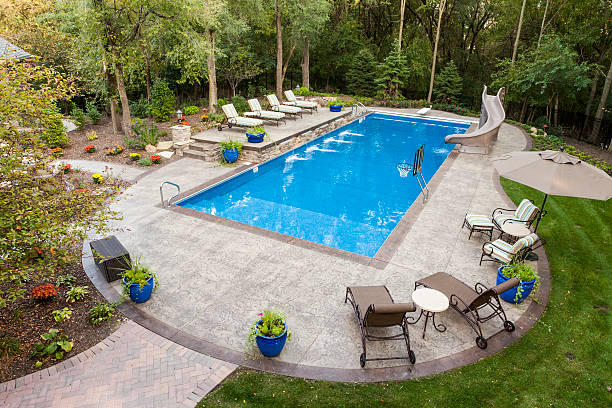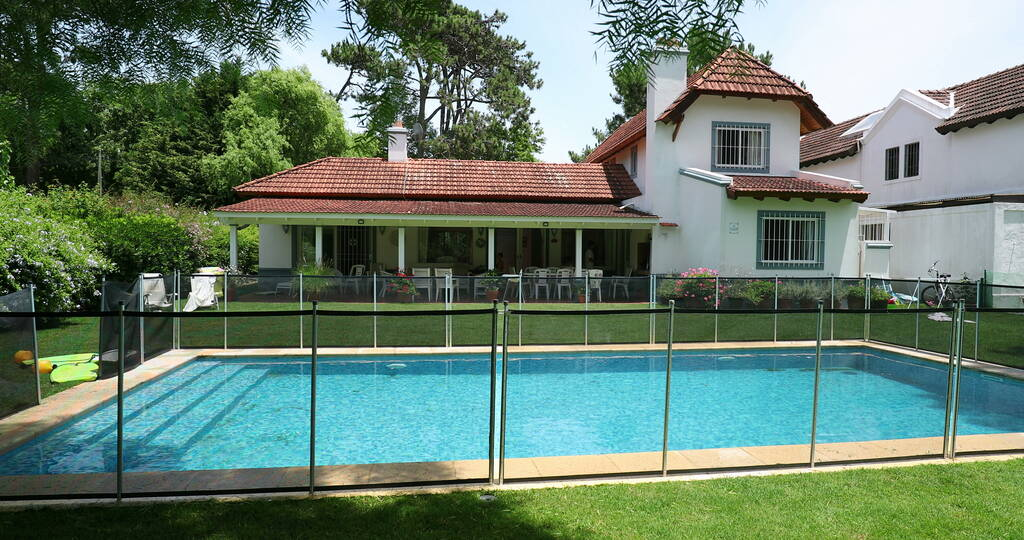
|
Eye on Design! |
INFORMATIVE,
EDUCATIONAL
&
ENTERTAINING
What You Need to Know about Inground Swimming Pool
Installing an inground swimming pool can transform your backyard into a luxurious oasis, perfect for relaxation, exercise, and entertainment. However, the decision to install such a feature comes with significant financial considerations. The cost of an inground swimming pool varies widely based on several factors, including the type of pool, materials, size, location, and additional features. This article delves into these factors to provide a comprehensive understanding of the costs associated with installing an inground swimming pool. Types of Inground Pools Inground swimming pools come in three primary types, each with distinct cost implications: 1. Vinyl Liner Pools Vinyl liner pools are typically the most affordable inground pool option. They consist of a custom-made sheet of vinyl that serves as the pool's interior surface, supported by walls made from steel, polymer, or concrete. The average cost of a vinyl liner pool ranges from $20,000 to $40,000. While vinyl pools are cost-effective, they require liner replacement every 5-10 years, which adds to long-term maintenance costs. 2. Fiberglass Pools Fiberglass pools are pre-molded structures installed in one piece. They are known for their durability and low maintenance. The average cost of a fiberglass pool is between $25,000 and $50,000. Although they have a higher upfront cost compared to vinyl liner pools, their long lifespan and minimal maintenance requirements often make them a cost-effective option over time. 3. Concrete Pools Concrete pools, also known as gunite or shotcrete pools, offer the most flexibility in terms of design and size. They are the most expensive type, with costs ranging from $30,000 to $100,000 or more. Concrete pools are highly durable and can be customized to fit any shape or depth. However, they require regular maintenance, including resurfacing every 10-15 years, which can be costly. Factors Affecting the Cost Several factors influence the cost of an inground pool: 1. Size and Shape These elements are considered to be one of the main cost drivers: the size and shape of the pool. Huge pools are a little more complex to make, will use more material, human resource, and digging services, making their overall price high. Also, pools that are constructed in jagged shapes or curves, or any other shapes other that the normal rectangular type will be relatively costly since they will need more materials and time from the constructors. 2. Site Preparation The costs include the state of the installation site which determines the level of constructions to be put in place. When there is need for grading, mobilization of obstruction or even compacting of ground this increases the amount of preparation. Also, the availability of the site has an impact on labor and equipment costs. 3. Materials and Finishes The cost depends on the materials selected for use on the interior part of the pool as well as the surrounding environment. If the flooring was to use items such as mosaic tiles, natural stones in coping or the decking was to be done using a high quality material such as travertine or paver it is likely to prove costly. Also, plumbing, filtration, and heating system all contribute in the making of the total cost, depending with the quality of the material used. 4. Features and Accessories Options such as waterfalls, slides, diving boards, lighting and automated covers are addition that make the pool even more functional and beautiful but bring the price up. Features such as saltwater systems, efficient filter systems, and automatic operating systems are the plus of high-tech but are costly. 5. Permits and Regulations Paying for licenses and permits as well as ensuring one meets the set regional requirements can also increase the expenses. The cost of permits also depends on location and may include the cost of extra inspections depending on the zoning laws or set building codes. See sample requirements at https://acton-ma.gov/DocumentCenter/View/9/Info-residential-pool?bidId= 6. Landscaping and Hardscaping It must be noted that the cost of the grass and the landscape design including other hardscape features may affect the total cost profoundly. If additional elements such as retaining walls, built-in grills, fire poles, and planting design are introduced they add beauty to the pool and as well add the cost. 
Additional Costs Beyond the initial installation, there are ongoing costs associated with owning an inground swimming pool: 1. Maintenance Regular maintenance is essential to keep the pool clean and safe. This includes chemicals for water treatment, electricity for pumps and heaters, cleaning supplies, and routine inspections. On average, pool maintenance costs range from $1,200 to $1,800 per year. Read here for more information 2. Repairs Over time, pools may require repairs due to wear and tear, weather damage, or mechanical failures. Common repairs include fixing leaks, replacing pumps, and resurfacing. The cost of repairs varies depending on the extent of the damage and the type of pool. 3. Insurance Homeowners may need to update their insurance policy to cover the new pool. This can increase annual premiums by $50 to $200, depending on the coverage and insurer. 4. Utilities Pools can significantly increase utility bills, particularly if they have heating systems or high-powered filtration. It's important to consider the additional cost of electricity, water, and gas when budgeting for a pool. Conclusion Installing an inground swimming pool is a significant investment that requires careful planning and consideration of various factors. The type of pool, materials, size, location, and additional features all play crucial roles in determining the overall cost. By understanding these factors and preparing for ongoing maintenance and repair expenses, homeowners can make informed decisions and enjoy the benefits of a well-designed and properly maintained inground swimming pool. Whether for relaxation, recreation, or adding value to the property, a thoughtfully planned pool can provide years of enjoyment and satisfaction.
|
